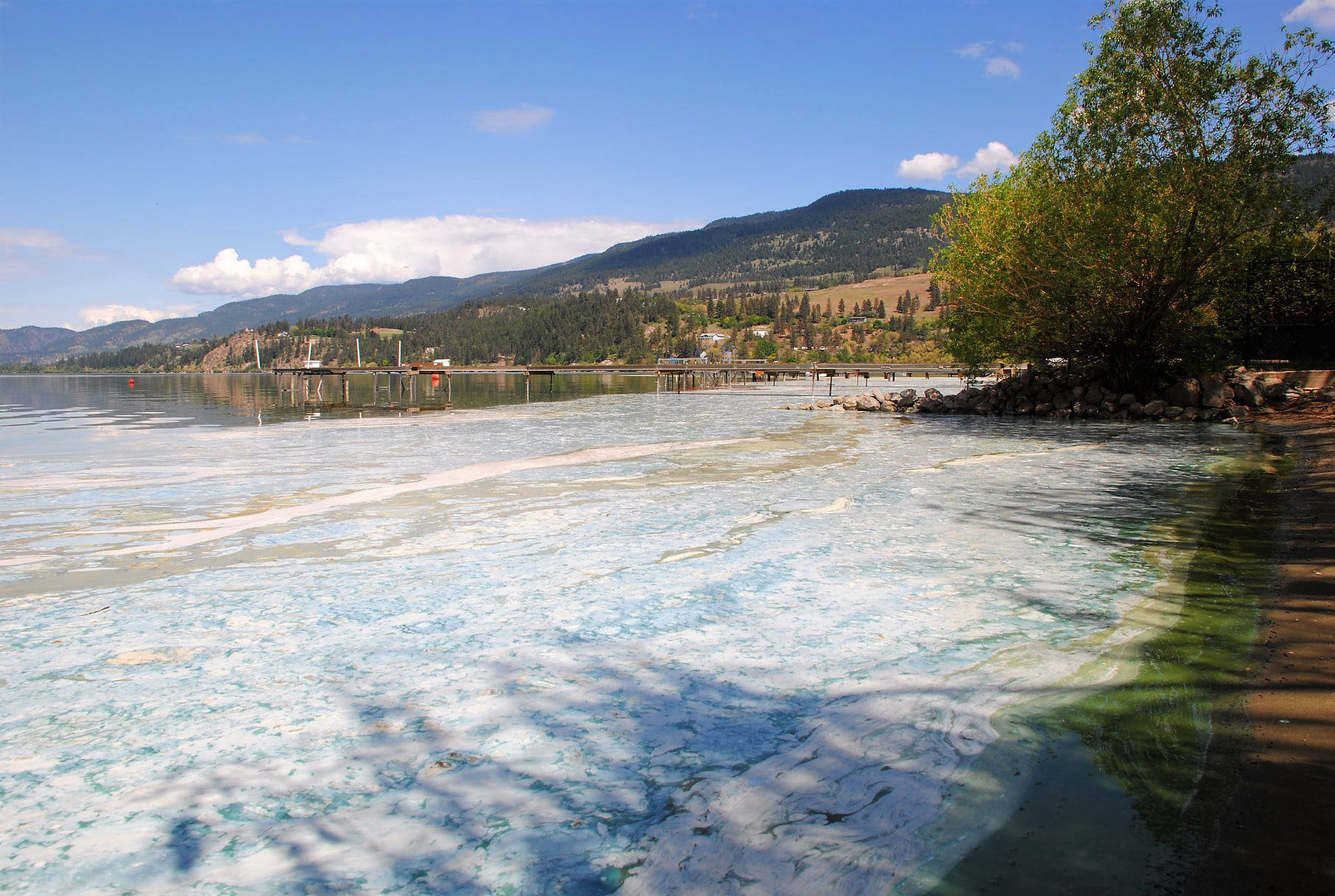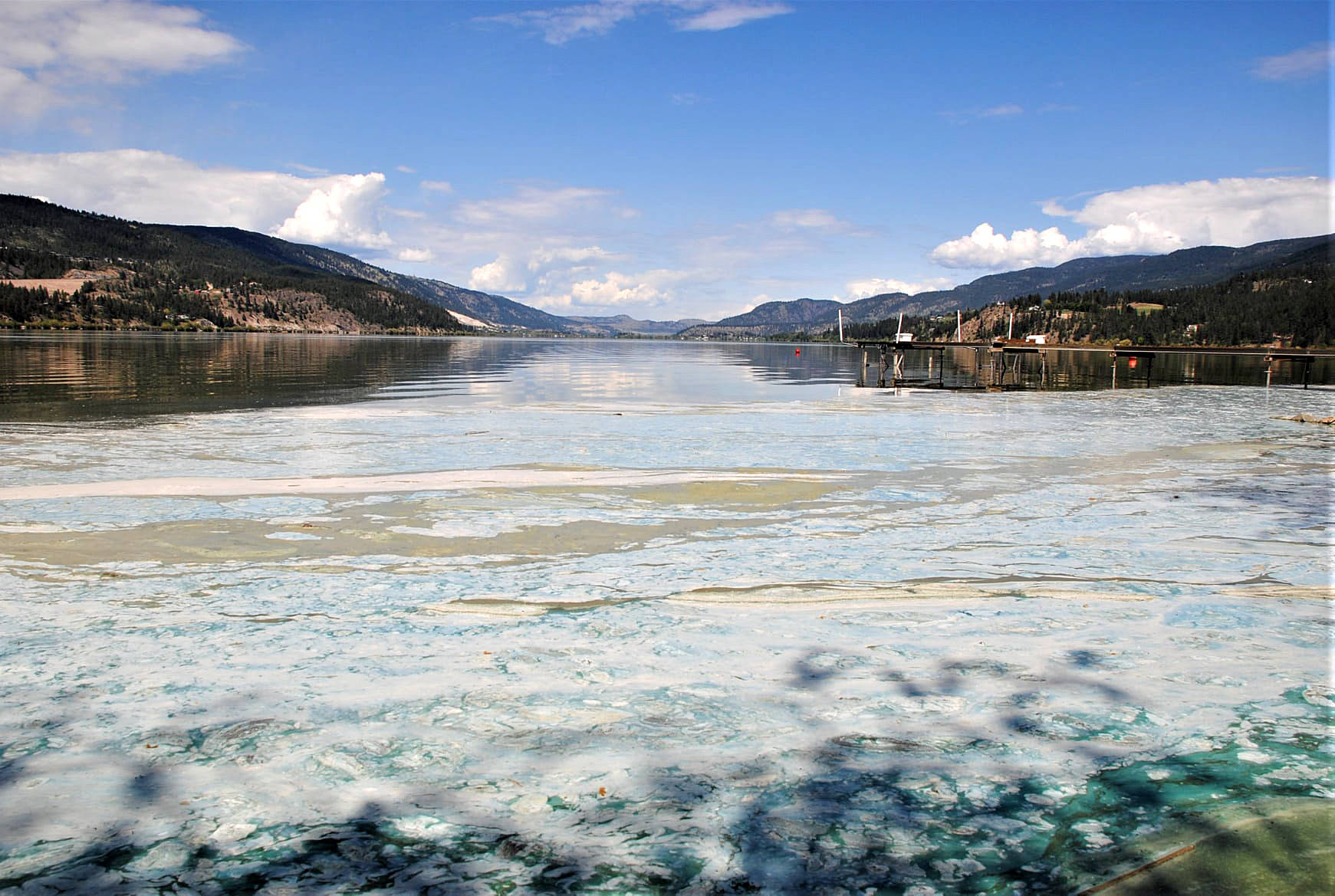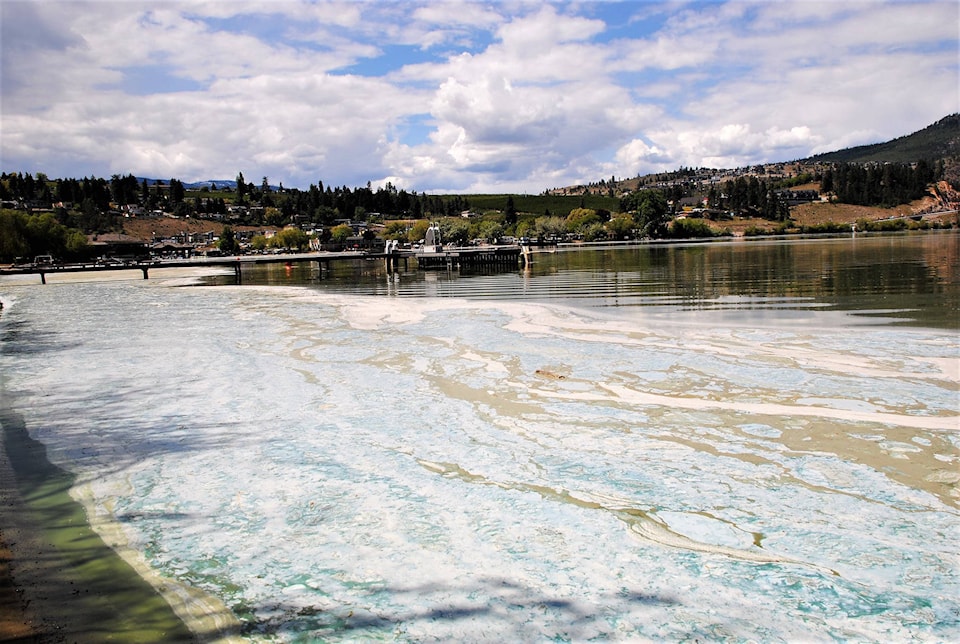The ongoing unpleasant look and smell of a local lake has residents concerned for the water’s well-being.
An algal bloom formed on Wood Lake and an advisory was issued April 21. While the bloom mainly covers the shores it appears to only be getting worse.
“I have lived here for six years and have never seen it this bad,” Wendy Innes-Shaw said. “Wood Lake looks seriously unwell.”
She walks along Bottom Wood Lake Road daily and says this is the worst.
“The water is also green and blue and stinks. I live close by and I also notice the osprey, geese and duck have almost disappeared.”
Geri Allan-Helmer agrees: “Wood Lake looks unwell.”
While most algal blooms are harmless, some species have the potential to produce toxins that can be harmful to humans.
Testing shows this bloom has low risk to the public.
Interior Health, the District of Lake Country and the Regional District of Central Okanagan are monitoring Wood Lake.
“While the bloom contains blue-green algae, testing indicates the risk to the public remains low. The water is considered safe for use,” stated the media release issued Friday, May 14.
Visitors and residents are reminded not to drink or cook using untreated water directly from lakes, ponds or wetlands due to the risk of waterborne illness. Boiling the water will not remove any toxins from blue-green algae blooms. Provide pets and livestock with an alternative source of drinking water where there are active algae blooms, as they can be sensitive to toxins.
An algal watch website was recently created following a bloom on Shuswap Lake in 2020.
READ MORE: Shuswap algal bloom prompts provincial monitoring initiative
Algal blooms are naturally occurring throughout B.C. Blooms may vary in colour from blue, green, brown, yellow, orange to red and appear like foam, scum, mats on surface or soup. Some algal blooms may also smell unpleasant. Algal blooms containing cyanobacteria may produce harmful toxins.
Consuming or coming into contact with water contaminated with cyanotoxins can cause a range of symptoms including: headaches, nausea, fever, sore throat, dizziness, stomach cramps, diarrhea, abdominal pain, vomiting, muscle aches, mouth ulcers, blistering of the lips, skin rashes and irritation of the ears and eyes.
It is important that you rinse your body with clean water immediately after exposure to contaminated water. Rinsing is recommended even without symptoms.
If you are showing any of the symptoms listed above and believe they may be from exposure to cyanobacteria, see your health care provider.
READ MORE: Algal bloom found on Lake Country’s Wood Lake
@LC_Calendar
newsroom@lakecountrynews.net
Like us on Facebook and follow us on Twitter.


